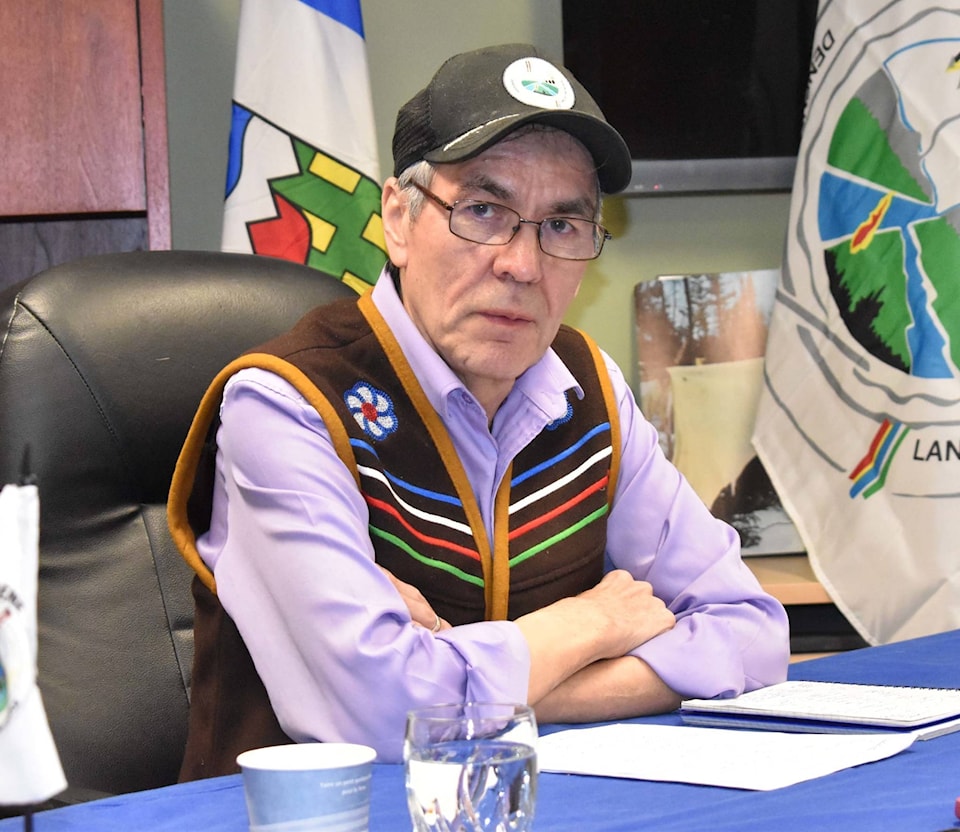The Government of Canada announced on Aug. 10 that $320 million in additional support would be directed to Indigenous-led initiatives that help Indigenous communities respond to and heal from the ongoing impacts of residential schools.
For Dene Nation Chief Norman Yakeleya, the money is a start, but establishing a Department of Reconciliation would be more meaningful.
“For them to put millions (of dollars) in areas, hoping that it’ll go away and it’ll be a non-issue in five to 10 years is wishful,” said Yakeleya.
A Department of Reconciliation would be directed towards the ongoing and outstanding issues in Canada’s history, according to Yakeleya, such as residential schools, Indian hospitals, and the ‘60s Scoop, during which time Indigenous children were sent to live with non-Indigenous families.
“A lot of Canadians have supported the Indigenous people, especially on the discoveries of the unmarked graves,” he said. “It’s education now is going to be key… to educate people [to] the real truth of the residential schools, and the power of the Indian Act, and the views and attitudes towards [Canada’s] own people, in its own backyard — covered up by the Roman Catholic church, the Anglican Church and the Government of Canada. Only giving their only version of the development of Canada, and how its policies treated its own people.
“This issue of residential schools is not going to go away,” said Yakeleya. “It’s here. It’s permanent. It’s buried in our graves on our land.”
Among the latest government funding, $83 million will be directed to community-led processes to research and locate Indigenous burial sites, as well as to create memorials to the children who died.
Ottawa is investing a further $107.3 million in 2021-2022 to support the expansion of mental health services, culture and emotional supports for residential school Survivors and their families as well as those impacted by federal day schools.
Another $100 million of the money over two years will go towards managing residential schools through demolition, rehabilitation or the construction of new facilities on reserve so that activities taking place in the buildings can continue. Communities can apply through the Residential Schools Missing Children — Community Support Funding Program.
A $20 million national monument to be erected in the nation’s capital will honour survivors and all the children who were taken from their families and communities.
Finally, $9.6 million, provided over three years, will support initiatives that commemorate the history and ongoing legacy of residential schools, including events and activities marking the National Day for Truth and Reconciliation, which will be observed for the first time this year on Sept. 30th.
Work is also underway by Crown-Indigenous Relations and Northern Affairs Canada to establish a national advisory committee to advise communities and the Government of Canada on the work to locate burial sites.
“I’m glad that they (the Government of Canada) are listening to the people,” said Yakeleya. “They’re doing their best to help the people with their healing and with the loss of their families, and their children, but we need to really rethink this whole issue of reconciliation and making things right with its own Aboriginal people on our own land — that the truth is slowly being peeled back as we start to look at our own history with Canada, and it’s painful, but that’s what it’s going to take.”
